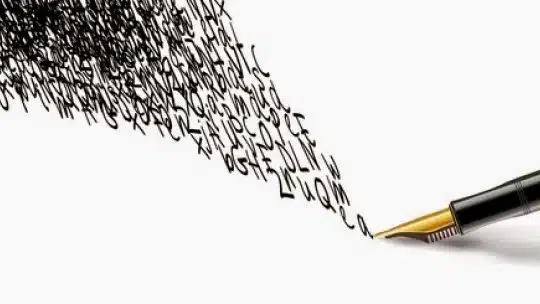Dyslexia is the most prevalent disorder in terms of learning disorders. It is especially detected during the school stage, and affects the reading processes, which end up having an impact and making writing processes difficult.
In this article we will learn about the three types of dyslexia according to the reading path affected, and the two types of dyslexia according to their origin. We will analyze the characteristics of each of them and see the differences they present, as well as their symptoms.
Types of dyslexia
Dyslexia is a learning disorder characterized by difficulty reading correctly This difficulty translates into symptoms such as exchanging letters when reading, confusing them and/or omitting words while reading. In addition, it can also (and usually) lead to difficulties in writing.
It is a very prevalent disorder among children and adolescents (especially boys). Specifically, it constitutes 80% of cases of learning disorders. It is estimated that its prevalence is between 2 and 8% of schoolchildren.
However, We find different types of dyslexia We can classify them according to various parameters. We will focus on two: according to the reading path affected and according to the origin. But first, let’s see what is meant by reading pathways through the double-track theory.
Double track theory
When we learn to read, we can do it through various ways of reading: the direct or visual way and the indirect or phonological way. These two ways are the concepts raised by the theory of the double way of reading.
To understand the different types of dyslexia that exist depending on the affected pathway, we must first understand well how each of the possible reading pathways work, since depending on whether one or another pathway is affected, the type of dyslexia will be one or the other.
1. Visual route
The visual route is also called the direct route or the lexical route When we use this route, we look at the graphic representation of the words, and we relate it to their meaning. As its name indicates, it is a way focused on vision, and it makes us read the words “globally”, without spelling them letter by letter.
From this route, we go from the words (through a gestalt and global perception of them) to the meaning of the term, and subsequently to its pronunciation (we read).
2. Phonological route
This second route is also called indirect or sequential route; When we use it in reading, we focus on the sounds of the letters to transform them into words, through a grapheme-phoneme conversion process.
That is, we rely on using phonemic coding, spelling letter by letter, sound by sound, to form the word. That is why it is also called sequential or indirect.
Unlike the visual route, the mechanism of the phonological route involves accessing the word, decoding it phoneme by grapheme, pronouncing it and finally accessing its meaning.
Depending on the affected route
The first parameter or criterion that we will use to classify the different types of dyslexia is according to the affected pathway. Thus, as we already announced, depending on whether the lexical route, the phonological route or both is affected, we find three types of dyslexia:
1. Lexical dyslexia
The first type of dyslexia is lexical dyslexia, where the affected pathway is the lexical pathway We must always think that the name of dyslexia corresponds to the affected pathway. This type of dyslexia is also called surface dyslexia.
A subject who presents it will have difficulties reading irregular words; that is, “atypical” words, with special writing rules that deviate from the usual model (such as irregular verbs).
This dyslexia is also called perceptual-visual dyslexia, as the visual pathway is affected. What happens in this type of dyslexia is that the person, not being able to read globally, because their visual pathway is affected, has to read letter by letter, decoding phoneme-grapheme.
Other associated symptoms
In addition, lexical dyslexia usually appears at 7 or 8 years old (unlike others that appear later). It is also accompanied by deficits in psychomotor skills and immediate memory (which allows us to remember events that have just occurred). The person confuses letters when reading, manifests reading comprehension problems and has altered writing (writes with inversions).
Finally, another characteristic symptom is the alteration in perceptual-visual skills when solving visual problems or locating objects.
2. Phonological dyslexia
The second type of dyslexia depending on the affected pathway is phonological dyslexia, in which the phonological pathway (non-lexical, indirect or sequential) is affected. The main difficulties are, in this case, reading pseudowords (that is, words that do not exist, invented).
This is explained as follows: the person who suffers from it, unable to read letter by letter and access the meaning of the words, because the phonological pathway is affected, must use the visual or direct pathway. And, not being able to decode phoneme-grapheme, she will have difficulties reading words that do not actually exist, since she will have to read them globally, and since they do not exist (and she is not used to them), the difficulty of processing them will appear.
Other associated symptoms
This type of dyslexia is also called auditory-linguistic dyslexia. It usually appears later than the previous one, in children between 9 and 12 years old. The accompanying alterations are related to immediate auditory memory. Additionally, the person confuses words that have a similar sound and skips letters when reading (omits them).
On the other hand, as occurs in visual dyslexia, the subject presents changes in writing, making syntactic errors, as well as poor reading comprehension.
3. Deep dyslexia
The last of the types of dyslexia is deep dyslexia, the most serious It is also called mixed dyslexia, since both pathways are affected; the visual and the phonological. Specifically, but the most affected is the phonological route (which cannot be used at all); On the other hand, the visual pathway is partially preserved, and that is why the subject is the only one that can be used (in part).
In this case, the subject has difficulty reading all the words, whether they are regular, irregular or pseudowords. That is why reading comprehension in this case is zero.
According to the origin
The second criterion that we will use to classify the different types of dyslexia is according to its origin Thus, we find two types of dyslexia, we know them below.
1. Developmental dyslexia
This dyslexia is also called developmental dyslexia Its origin is unknown, but it has been related to genetic alterations and delayed maturation. Affects from birth; However, it can obviously begin to be detected when the boy or girl begins to learn to read. It is more common than the next type of dyslexia (acquired dyslexia).
2. Acquired dyslexia
In this case, Acquired dyslexia has its origins in a brain injury that affects one or more areas of the brain involved in the literacy processes. Depending on the child’s age at the time of the injury, their brain plasticity, the cognitive stimulation they subsequently receive and other variables, the dyslexia that appears will be more or less severe, and more or less temporary.











